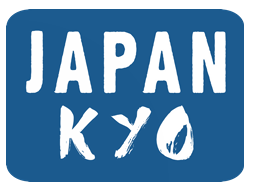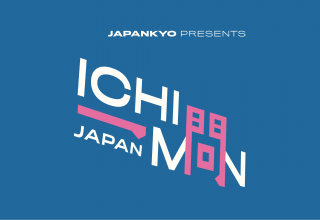
This is a rebroadcast of Ichimon Japan episode 21.
Today’s Question
On this episode of Ichimon Japan we ask: What’s so scary about the hour of the ox?
Topics Discussed
- All about Japan’s old way of telling time that was based on the 12 animals of the Chinese Zodiac (eto)
- Which “animals” in the old Chinese Zodiac based way of telling time correspond to which hours in the modern way of telling time
- Why the “hour of the ox” (ushi no koku) was thought to have associations with demons and inauspicious things
- What a “demon gate” (kimon) is
- In which direction you would find a kimon (demon gate)
- What ushimitsudoki is and what time it corresponds to
- The punctual nature of demons
- What ushi no koku mairi is
- How people performing ushi no koku mairi are typically depicted today
- The historical origins of ushi no koku mairi
- The story of Uji no Hashihime
- The various tools involved when placing a curse on someone ushi no koku mairi style
- The potentially deadly consequences of catching someone in the act of performing ushi no koku mairi
- Websites/companies that offer to places curses on your behalf
- Whether performing ushi no koku mairi or cursing someone is illegal in Japan
- Two actual cases of people threatening others using straw dolls (wara ningō)
- Why you could get arrested if you were to perform a full ushi no koku mairi ceremony
- How you can purchase ushi no koku mairi kits from online retailers like Amazon Japan
- One man’s attempt to curse the coronavirus ushi no koku mairi style
- And more!
Listen to Ichimon Japan on
Apple Podcasts Google Podcasts Stitcher Spotify iHeartRadio PodBean Tunein RSS
Support on Patreon
If you enjoy Ichimon Japan and want to ensure that we’re able to produce more episodes, then please consider becoming a patron on Patreon.com. For a minimum pledge of $2 a month you’ll get access to exclusive content and our eternal, profound, and undrying gratitude.
Sources, Links, Videos, Etc.
There are various ways of referring to the old way of telling time used in Japan that was based on the 12 animals of the Chinese Zodiac. The two most common terms are kojikoku (古時刻) and jūnijishin (十二時辰). Much of the information this episode was based on was gathered from the Japanese-language sources below.
- Jūnijishin (十二時辰)
- This is the Japanese-language Wikipedia entry.
- 昔の時間の古時刻・十二時辰とは?初刻や正刻の鐘の意味は
- This is an in-depth article focusing on the old system used in Japan for telling time.
Although it is not as thorough as the Japanese language articles above, the Japan Times article below does give some general information on the old Chinese Zodiac based system of telling the time that Japan used to use.
In the Chinese Zodiac-based way of telling time the day would start with the hour of the rat (ne no koku) and end with the hour of the boar (i no koku). Below you can see the terms used for all 12 animals/time divisions) and what two hour block each corresponds to. Also it should be noted that both English and Japanese-language sources are unclear on when exactly each two hour block of time begins. In general sources go with wording like “between 11 and 1,” thus I have been unable to determine with 100% certainty if, for example, the last minute of the hour of the rat is 12:59 (which seems more likely) or 1:00. While this degree of precision was likely not a matter of concern for most people when this method of telling time was still being used, the question of when exactly each block of time ends is nevertheless one that remains and is unfortunately not solved in the information below.
- 11:00 p.m – 1:00 a.m. Rat 子 (鼠) ne
- 1:00 a.m. – 3:00 a.m. Ox 丑 (牛) ushi
- 3:00 a.m. – 5:00 a.m. 寅 (虎) tora
- 5:0 am. – 7:00 a.m. Rabbit 卯 (兎) u
- 7:00 a.m. – 9:00 a.m. Dragon 辰 (竜) tatsu
- 9:00 a.m. – 11:00 a.m. Snake 巳 (蛇) mi
- 11:00 a.m. – 1:00 p.m. Horse 午 (馬) uma
- 1:00 p.m. -3:00 p.m. Sheep 未 (羊) hitsuji
- 3:00 p.m. – 5:00 p.m. Monkey 申 (猿) 酉 saru
- 5:00 p.m. – 7:00 p.m. Rooster 酉 (鳥) tori
- 7:00 p.m. – 9:00 p.m.9:00 p.m. – 11:00 p.m. Dog 戌 (犬) inu
- 9:00 p.m. – 11:00 p.m. Boar 亥 (猪) i
Information about the two articles by Salvador Jimenez Murguia that were mentioned in this episode can be found below. Only the second article is accessible for free.
The link below is for a video about the “Curse Demon Association” (呪鬼会, Jujikai), which is, according to the video, a group of Shinto priests that will curse people for you in exchange for money.
The link below will take you to the Nikkan Spa article mentioned in this episode. The article describes one person’s attempt to curse the coronavirus using ushi no koku mairi in order to stop the pandemic. Although the article is in Japanese, it’s worth a look even if can’t read Japanese since he pictures are pretty amusing.
Here is a staged video of a couple guys claiming to have come across someone performing ushi no koku mairi.
Here is the tutorial style video mentioned in this episode. The video walks you through the the entire process of cursing someone using a home kit that you can purchase online.
To listen to the latest episode of Japan Station, use the link below.
Japanese Vocabulary List
Most episodes feature at least one or two interesting Japanese words or phrases. Here’s some of the ones that came up on this episode. All information is from Jim Breen’s WWWJDIC.
- Eto
- 干支 【えと; かんし】 (n) (1) sexagenary cycle (60-year cycle of 12 animal zodiac and 5 elements in the traditional Chinese calendar); (2) 12-year Chinese zodiac
- Ushi no koku mairi
- 丑の刻参り 【うしのこくまいり】 (exp,n) cursing ritual where one visits a shrine at 2am and nails a doll representing a person to a tree, praying for said person’s death
- Hakamairi
- 墓参り : 墓参り(P); 墓参(P) 【はかまいり(P); ぼさん(墓参)】 (n,vs) visit to a grave
- Ushimitsudoki
- 丑三つ時 【うしみつどき】 (n) (1) dead of night; middle of the night; midnight; (2) (See 丑の刻) third quarter of the hour of the ox
- Wara ningyō
- 藁人形 : 藁人形; わら人形; ワラ人形 【わらにんぎょう(藁人形,わら人形); ワラにんぎょう(ワラ人形)】 (n) straw doll; straw figure; straw effigy
- Kyōhaku
- 脅迫 【きょうはく】 (n,vs) threat; menace; coercion; terrorism
We Want Your Questions
Is there something about Japan that confuses you? Is there something about Japanese culture that you would like to learn more about? Is there something in Japanese history that you would like us to explain? We’re always looking for new questions about Japan to answer, so if you have one, please send it to ichimon@japankyo.com.
Special Thanks
Opening/Closing Theme: Produced by Apol (YouTube, Twitter, Facebook, Fiverr)
Ichimon Japan cover art: Produced by Erik R.















